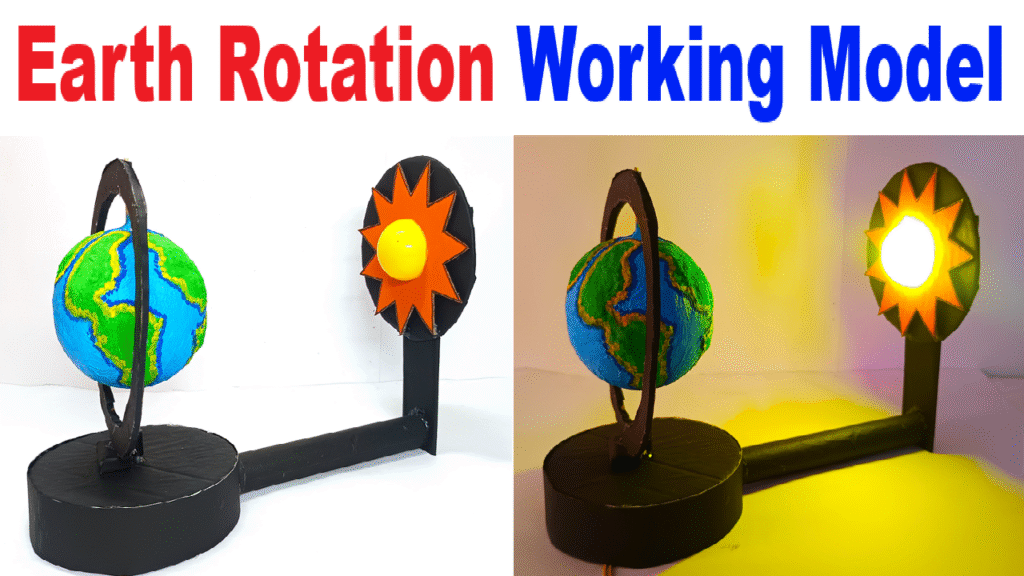This model shows how the Earth rotates on its axis, causing day and night. The Sun remains stationary and glows using an LED.

The Earth rotates using a slow motor, and as it turns, different parts face the Sun or move into shadow. This helps us understand the real reason for day and night on Earth.
Step-by-Step Assembly Instructions:
Step 1: Prepare the Earth and Sun Balls
- Paint the larger ball yellow/orange to resemble the Sun.
- Paint the smaller ball blue/green to represent the Earth with continents.
- Optionally add stars or planets on a black chart paper background.
Step 2: Install LED Inside Sun
- Make a hole in the Sun ball, insert a yellow/white LED inside.
- Connect to a battery pack or USB power source.
- This simulates the Sun’s glow.
Step 3: Setup the Rotating Earth
- Insert a metal rod or stiff wire into the Earth ball (through poles).
- Connect this rod to the shaft of the slow motor.
- Fix the motor vertically on the base, so Earth stands upright and rotates.
- You can tilt the Earth at ~23.5° to represent its real axial tilt.
Step 4: Wiring and Power
- Connect:
- LED to a switch and power.
- Motor to a separate switch or same one.
- Use a common battery or 2 separate ones depending on voltage needs.
Step 5: Mount the Model
- Stick the Sun ball on one side of the base.
- Place the Earth ball with the motor at the correct distance.
- Ensure wires are neatly hidden or taped.
Step 6: Demonstrate Day & Night
- As the Earth rotates, only one side faces the Sun, creating daytime.
- The opposite side is in shadow, representing nighttime.
- Optional: Stick small paper houses/flags on continents to show when they’re in day or night.

